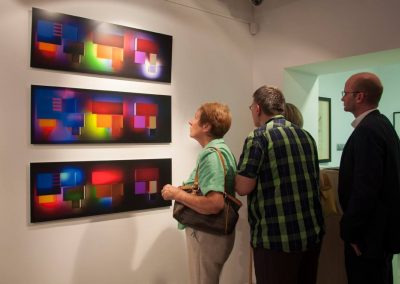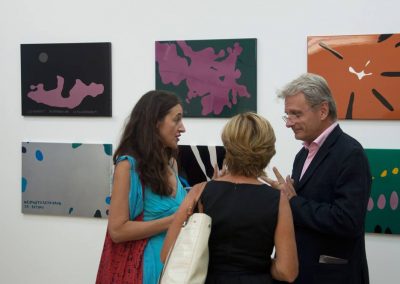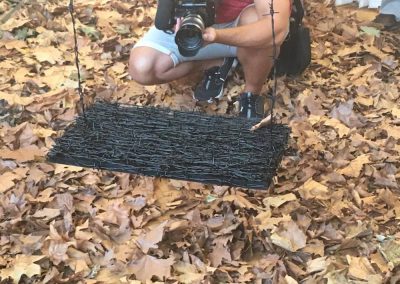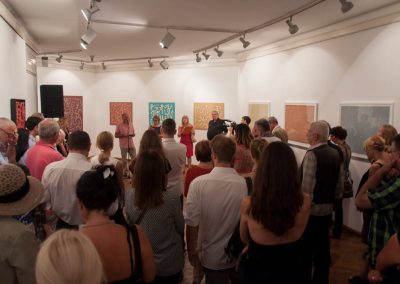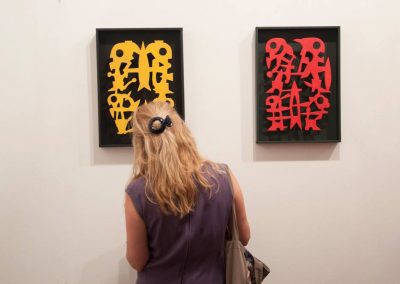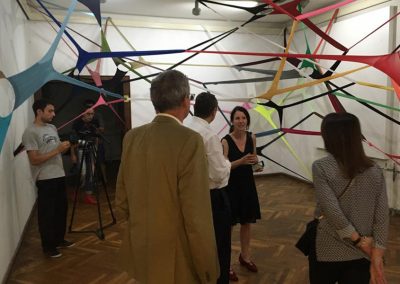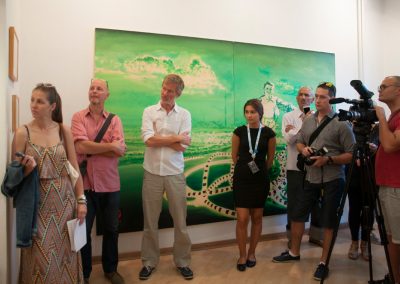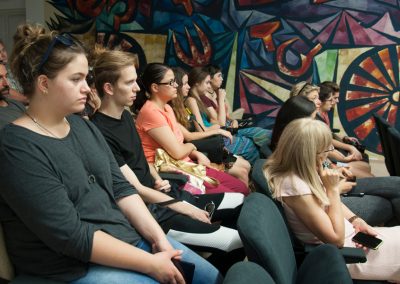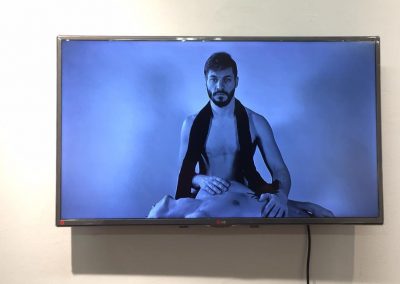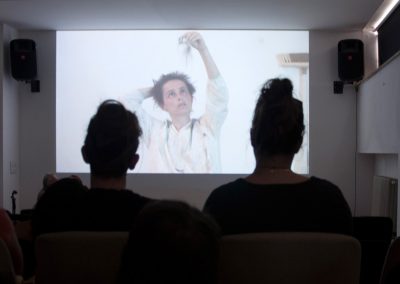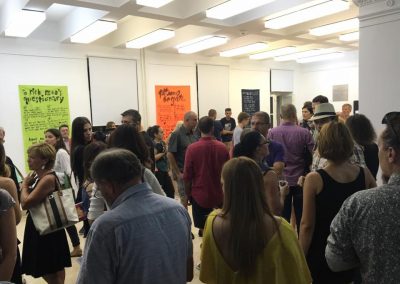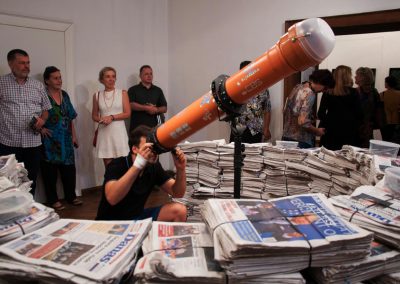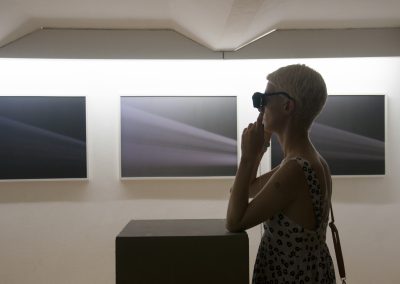ART AND GLOBAL INSECURITY
Sava Stepanov
During August and September of this year, the Fourth Festival of Contemporary art Danube Dialogues 2016 was held in Novi Sad. It involved fifteen solo and group exhibitions of works by artists from fourteen countries of the macro Danube region (Germany, Austria, Slovakia, the Czech Republic, Hungary, Croatia, Slovenia, Serbia, Bosnia, Montenegro, Macedonia, Romania, Bulgaria and Ukraine). The theme of this year’s Danube Dialogues was art and global insecurity. This topic imposes itself in many forms because of which modern man is on constant alert, perpetually stressed, prepared for various, mostly involuntary situation. At the beginning of the 21st century, the world politics established itself as a permanent source of instability. Through its geopolitical strategies and economic interests, political competition which led the world into a state of permanent war and economic crises had been imposed, resulting in the long-term consequences of violently implemented democratization and subsequent great migrations, culminating in terrorism. In all this, new technologically advanced media play a big role, almost equalizing real and virtual worlds. Thanks to their efficiency (seen by Manevich as the main feature of a digital algorithm), all these crisis situations are generated by inconceivably rapid dissemination of information, which disturb existential mindfulness globally. Because, as Susan Sontag observed, “Wars are now also living room sights and sounds…”
The participants of this year’s Danube Dialogues in Novi Sad addressed this state of the world. The main impression from the exhibition certainly is the sovereign artistic awareness of artist’s own involvement in global problems. In the omnipresent medialization of the world and arts, there is an acute awareness of the fact that, thanks to electronic network channels, local events (usually crises and bad news) are quickly globalized and converted into personal traumas and individual sense of vulnerability. Therefore, a true modern-day artist acts consciously and rationally, trying to preserve dignity and humanitatis principia artis in our non-emotional, dangerous and insecure world.
Novi Sad exhibitions Danube Dialogues 2016 offered a lot of interesting messages and conclusions. The works of three Austrian artists primarily stem from the conceptual consideration of topics that are directly related to the issue of global insecurity. Christian Cap analyses specific historical content and summarizes it into a completely personalized nomenclature of history, showing the subjectively systematized scheme of historical events and their global consequences. The artistic duo Michael Endliher and Franz Stefan Kohl are committed to checking semantic characteristics and meanings of words. In their monumental polyptych picture, they destroy the word “disruption” (interruption, disruption) and its meaning. Both of these artistic concepts, in an entirely discreet fashion, show how the global insecurity manifests itself.
The young Montenegrin artist Milena Jovičević – in an idyllic and elegiac atmosphere of gallery space where the floor is covered with autumn leaves – sets a swing with barbed wire, invoking quite suggestively the current atmosphere of danger and unrest. This effective work, however, should not be regarded merely as a kind of poetic illustration. For, in a cultivated way, Milena Jovičević is in fact dealing with the reality, its properties and its atmosphere. Thus she uses the actual material, insists on its authentic property, counting on the materiality and reality of dry leaves, wood, barbed wire. Placing this clip of reality in a space of “gallery box”, she makes it stands out and offers it as a sublime and effective suggestion. The artistic pair Danijel Premec and Nela Hasanbegović with their joint installation (space, video) point to their own ever present trauma of an unforgotten war as individual and general evil – turning it into an artistically sophisticated universal statement, with deeply moving and engaged meaning and effect. Slovenian painter Uroš Weinberger presents billboard-like pictures critically examining the environmentally devastating behavior of large oil (and other) companies, while the artworks from Serbia are dominated by texts (in the installations of Ivana Ivković, unconventional images of Žolt Kovač and the ŠKART group) and the photos of diSTRUKTURA, which humorously and implicitly point to how the environment of general insecurity manifests itself. Croatian artist Ana Petrović displays installations with optical devices (old and modern-day) and experiments by criticizing the current atmosphere of global iconosphere in which we exist and by which we are increasingly threatened. Bulgarian artist Venelin Shurelov deals with the relationship of man and automated machine pointing to the problem of alienation but also to the kind of risk that automation and robotics pose to contemporary man. Romanians David Iancu and Denis Simion transform events from reality into exciting installations (with subtle surrealist overtones) that vibrate wonderful emotions based on foreboding and the feeling of anxiety. By tightening stretchy and colored women’s tights, German artist Ulrike Kesl, modifies (gallery) space, eliminating its functionality and making it a zone of physical and psychological barriers. The significance of this work is ambiguous, and metaphorically very rich. Ulrike Kessl completely covers space with this network, marking all its capacities. Therefore, the space drawing looks like a systematically organized network. The installation points to the dual nature of technologically developed modern world being a scene of progressive ideas and realizations, but also as an environment of global insecurity. The two-cable video work of Czech artist Lukas Kellner also talks about conflict, inconsistency and disharmony of the world. The pictures and graphics of the Hungarian artist György Olajos show modernist plastic authenticity, whose dense and labyrinthine look metaphorically points to the difficulty of the global security quest. Finally, the installation of Slovakian artist Radovan Čerevka was presented as a military shelter with a spyglass. Instead of the expected solid fortifications, Čerevka set up a circular shelter from bales of old newspapers (we live in the information age of most varied origin, quality and intention), which gives this art installation a grotesque content and appearance. At the same time, the spyglass serves as a strange kaleidoscope – instead of colored patterns it offers new violently aestheticized mosaic units of ‘overlapping’ photos with the world’s battlefields … By thinking about essential issues of global (in)security in this way, Radovan Čerevka tried, in a somewhat naive, sincere and touching way, to give another chance to the utopian belief of Dostoyevsky that beauty will save the world.

